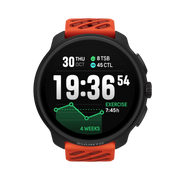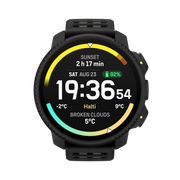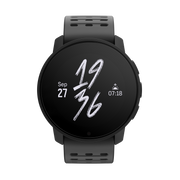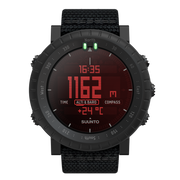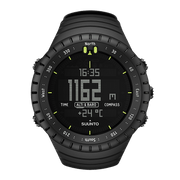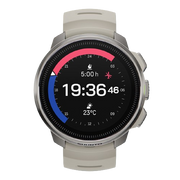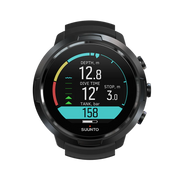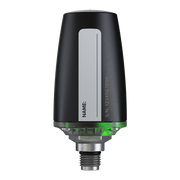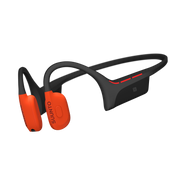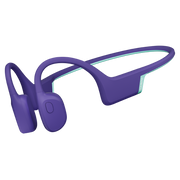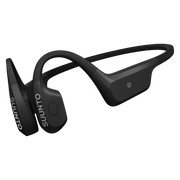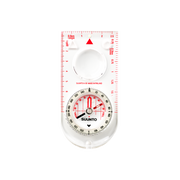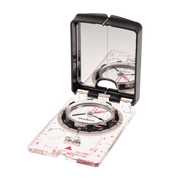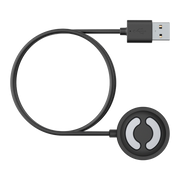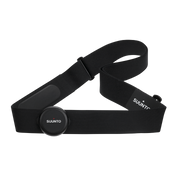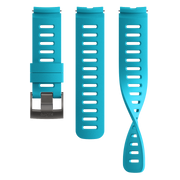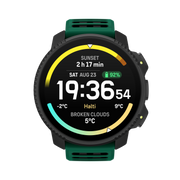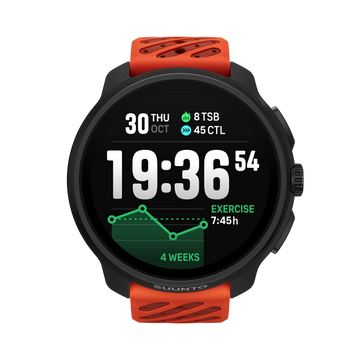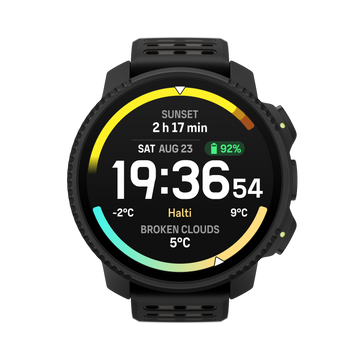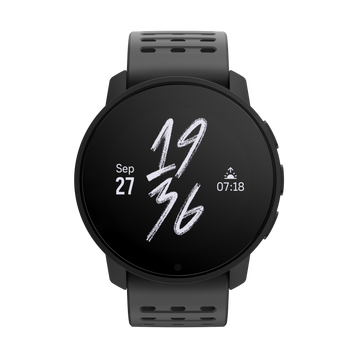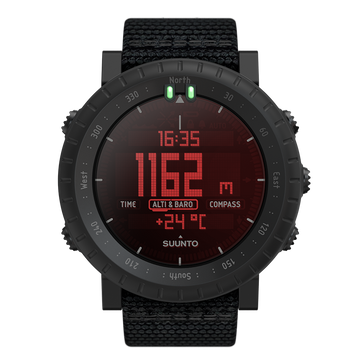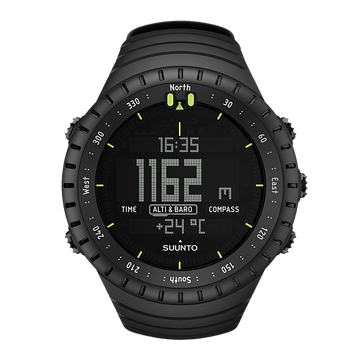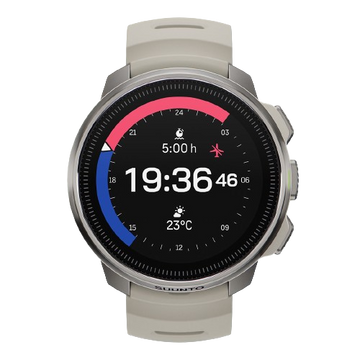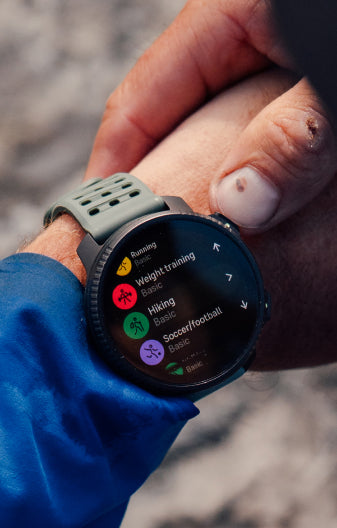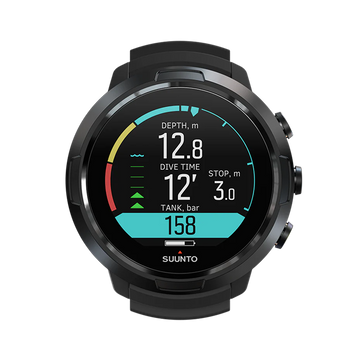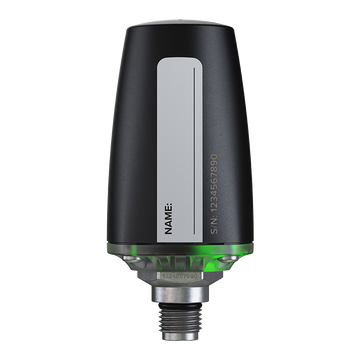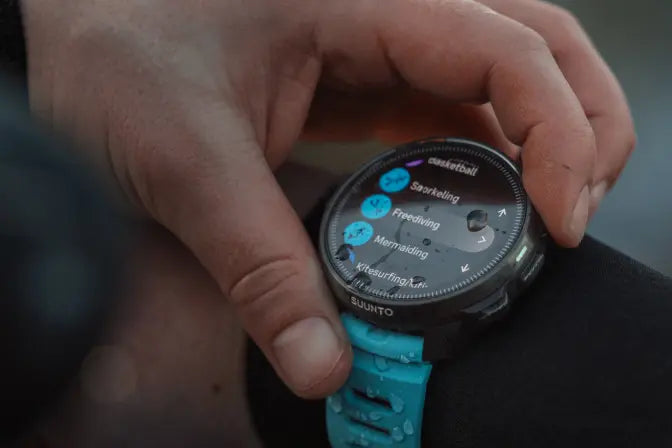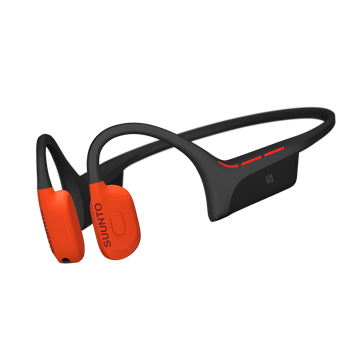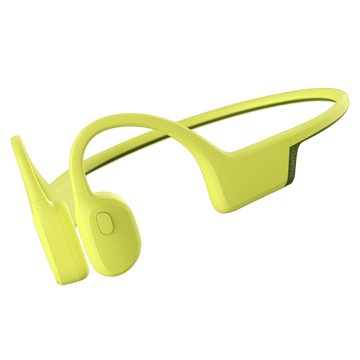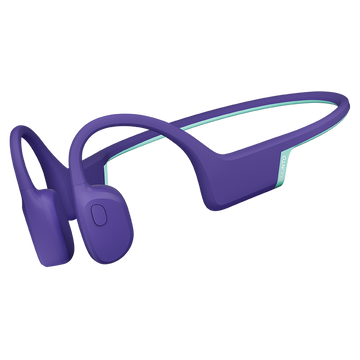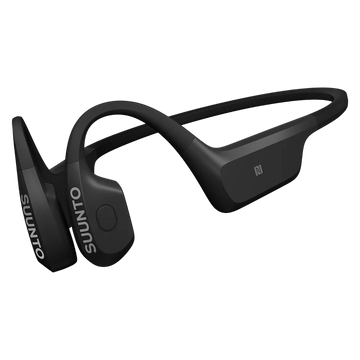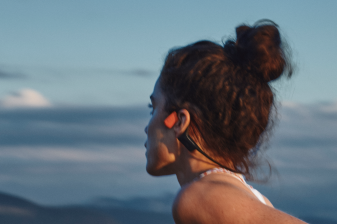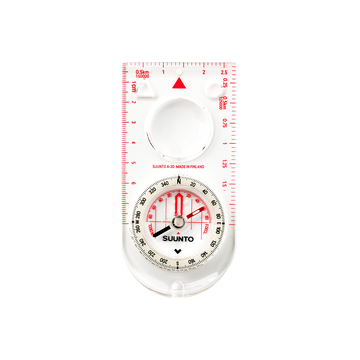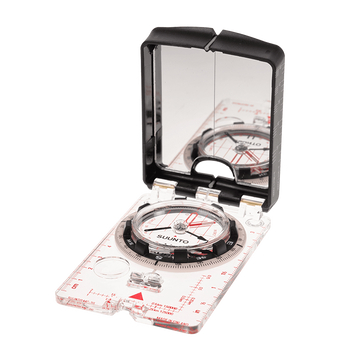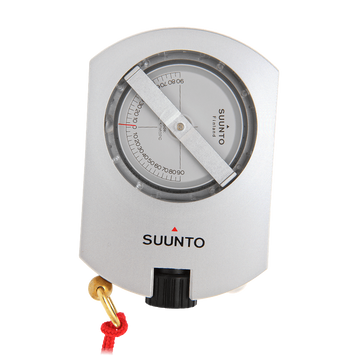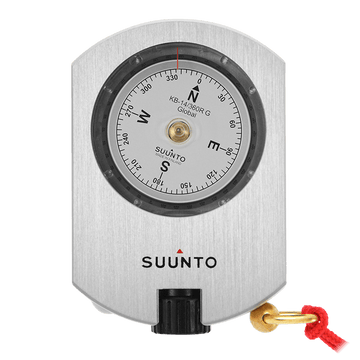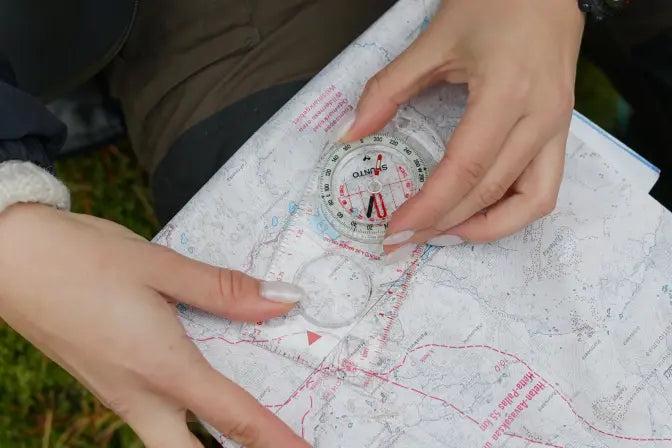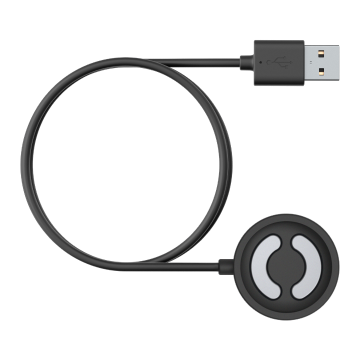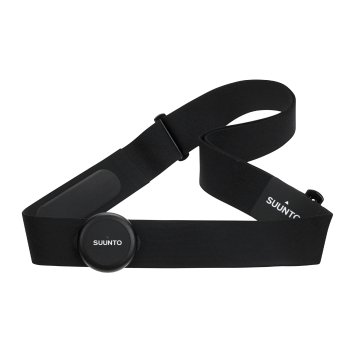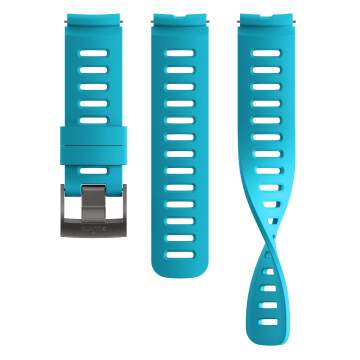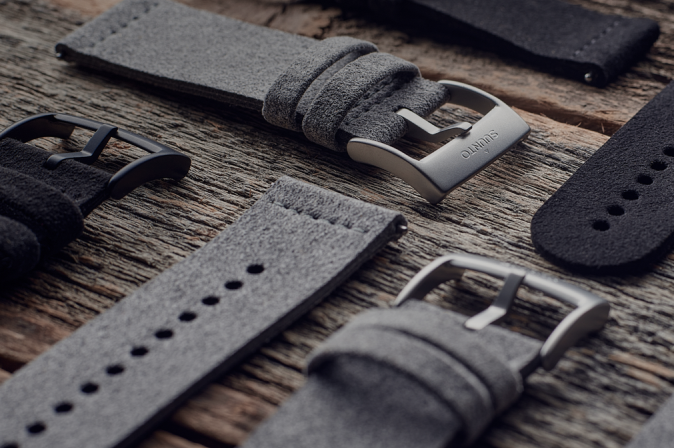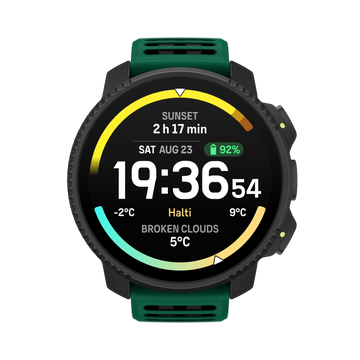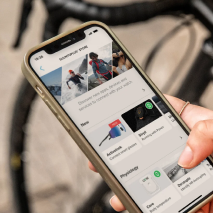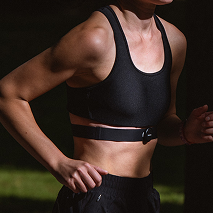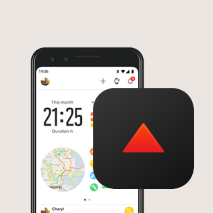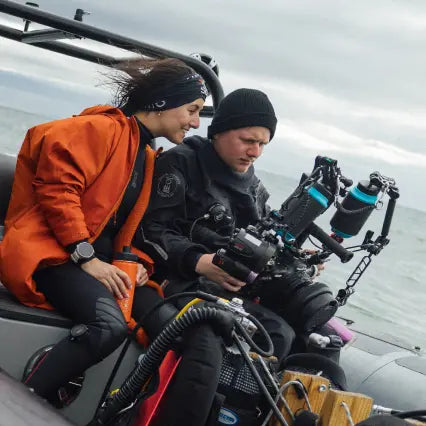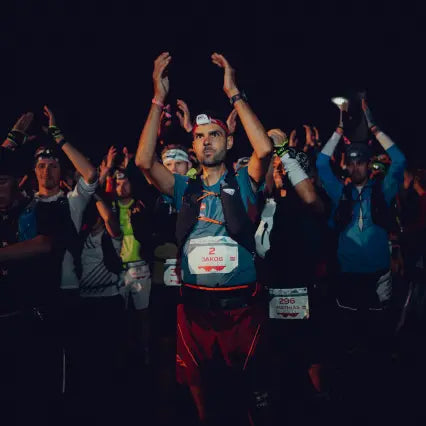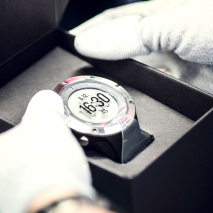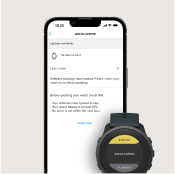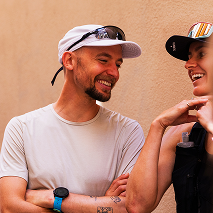
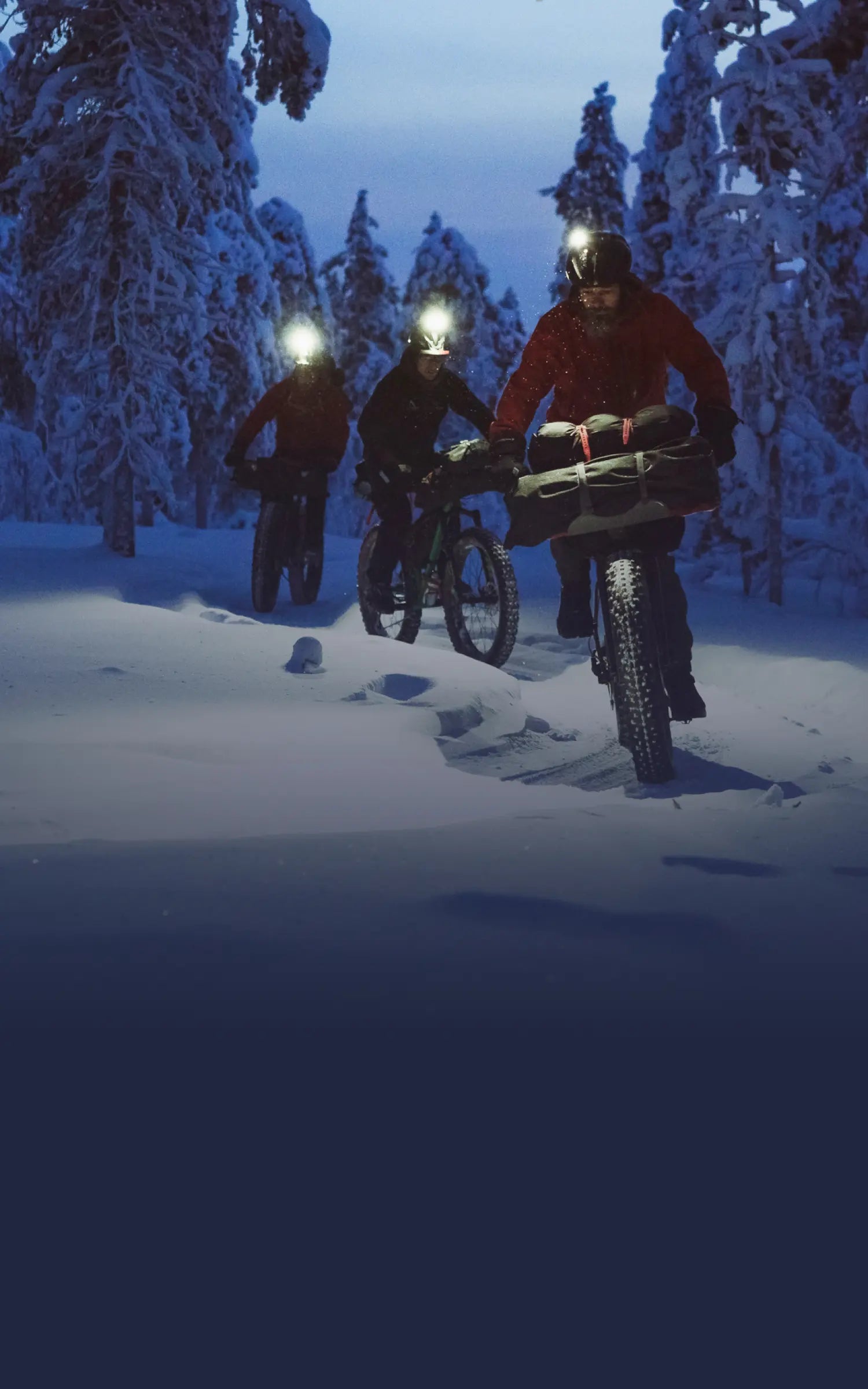
Suunto Blog

One triathlete’s journey through hell and back to the Kona start line
Doctors told her she would never run or race again. Kelsey, then 31, was lying in a hospital bed, her body battered and bruised after a truck hit her, and her vision for her life in ruins. She decided to prove the doctors wrong.
After recovering from the accident Kelsey drove herself hard. She refused to give up. While the determination was admirable, she now admits it bordered on reckless.
“I spent the next year trying to come back, but was plagued with more injuries and frustration,” Kelsey explains. “I gained a lot of weight and fell into a depression where I coped by going out at night, drinking way too much, and just not really living life as a pro athlete.”
Kelsey began swimming competitively when she was six years old. Later at college, she competed in Division 1 before moving to the Olympic Training Center in Colorado Springs as a member of the USA Triathlon National Team. She completed her first triathlon as a senior high school student in 2001, and was hooked.
With her life in tailspin after the accident, Kelsey got close to quitting triathlon. But then she met Mike, her now coach and boyfriend, who helped her turn everything around.
“The new path I chose to go down was life changing, but not easy,” she says. “Mike got me healthy for the first time years. But when I did decide to start racing again, I was in for a rude awakening. I moved up from ITU (International Triathlon Union races) to the 70.3 distance and finished dead last in most of those races.”
She was going in the right direction. But some old bad habits were holding her back. Eventually Mike gave her an ultimatum: get a job and make triathlon a hobby or commit 100% and make triathlon her job. “It took a good week for me to decide to go ‘all in’, but when I did, everything switched for me,” she says.
The decision empowered her; in 2017 she won her first Ironman 70.3 at Victoria, then backed that up with a win at Ironman 70.3 Manta the following weekend. She has been on the podium at almost every race since, securing her first Kona slot this year at age 36.
“This just goes to show you that if you work really hard and don’t give up, amazing things can happen!” she says.
Kelsey takes over our our Instagram stories this weekend. Follow along as she prepares for Kona!
READ ALSO
How (not) to qualify for Kona
Road to Kona: Cody Beals' clear race strategy
Road to Kona: 5 tips to train effectively as a couple

Which nation runs the fastest? 10 fun facts from 2019
Suunto app saves millions of workouts every year, creating a veritable treasure trove of training data. When our data team crunches that mountain of numbers – while respecting personal privacy laws, of course – they discover some surprising sport insights.
Our data nerds have just finished calculating the 2019 workout stats generated by users in nations across the world. Continuing the age old tradition of friendly international sport rivalry, we looked at which nation is the fastest, which nations runs for the longest distance, as well as other stats. We’re sure you’ll find the results as interesting as we do.
Flat and fast: Denmark sets the pace
According to our analysis of all the workouts in 2019, runners in Denmark are lightning. The average pace of our Suunto-wearing Danes is 5:11 min/km! Whoop! That’s quick.
Perhaps it’s not surprising given a 2017 Eurostat survey found Denmark, a nation of 5.6 million, exercises more than all other EU nations, apart from Suunto’s own Finland. Apparently exercise, whether cycling the small nation’s famous bicycle path network or running along its gorgeous coastline, is a core element of Denmark’s culture. Respect!
Click here for tips on how to improve your running economy!
The long run: Portugal goes the distance
Portugal, a nation of 10.3 million, likes to run! Our data shows people in Portugal ran the longest average running distance – 10.3 km/run. It’s the only nation to break the 10 km average distance mark. Bem feito!
Click here for tips on running the distance!
Sleep tight: who sleeps the most/least?
Analyzing all the sleep data proved an interesting exercise. People in Chile, Finland, New Zealand and Ireland enjoy a good night’s sleep; on average they get more than seven hours a night.
Conversely, people living in Asia, including Indonesia, Malaysia, Thailand and South Korea, seem to like burning the candle at both ends; on average they get less than 5.5 hours a night. We hope they’re getting enough recovery time!
Click to read how sleep can make you a better runner!
Feeling great: the most common feeling vibe
It seems like Suunto users are positive bunch – must be all that outdoor exercise. We checked what is the most common feeling recorded after all the workouts, and we discovered “excellent” came out on top. That’s a really good sign. Feelings are a great way to keep track of how your training is going, and to monitor whether you might need to rest more.
Magnifique: the French LOVE trail running
When comparing their trail running to treadmill workouts, the ratio in France is 12.9:1, almost 13 times more trail than treadmill. In the US, by comparison, the ratio was 1.6:1, and in Spain 4.8:1. We’d love to know what causes this big difference!
Around the clock: trail runners move for the longest
Respect to all the trail runners out there. It’s the most popular activity for 12+ hour long activities. That’s a solid length of time to be on your feet moving. We hope you are fueling and hydrating well.
Read to learn how to transition from road to trail running!
By foot wins: running and walking the most popular
Running came out as the most popular activity among Suunto users, followed by walking, and cycling in third place.
Sport lovers: Suunto fans enjoy four activities
On average Suunto users did 4.3 different activities during the year. But some were much more varied; one user tracked 74 different activity types, another one did 72! That’s an impressive performance! We wonder how they found the time!
Go guys! Men walk more
Out analysis shows male Suunto users walk a little more than women. Men walk on average 9446 steps a day, and women 7969. Ladies, show them next year!
Lead images: © Graeme Murray / Red Bull Content Pool
Read more articles:
7 tips for running in the dark
Hunter or the hunted? 7 race tactics for the trophy
Fuelling the engine: 6 principles of nutrition for athletes

Blaze Fresh Routes with Heatmaps
Rather than follow the herd, with Suunto Heatmaps you can find places where the crowd doesn't train. Then paint the town red and yellow with your own training glow. Whether you're looking for running, cycling, swimming or hiking routes, Heatmaps shows where the hotspots are, and where there's space for you to stay safe and keep your distance.
View Heatmaps on Suunto app and offline with Suunto 7
Based on millions of workouts, Heatmaps show where the Suunto community loves to train across the planet. Discover new training routes in your own neighborhood, find the popular local spots when you are somewhere new or – to stay safe and keep your distance – avoid the much-travelled trails.
To view activity specific Heatmaps and to plan routes go to the map view of your Suunto app and select the desired Heatmap layer. If you don’t have Suunto app yet, get it from the App Store or Google Play and start exploring.
On a Suunto 7 you have easy, offline access to both Heatmaps and detailed terrain maps when you're exercising outdoors. You can see your track on the map, use Heatmaps to explore new routes, or follow your track back to where you started from.

Join the #HomeTeamHero relay now and make your workouts matter
As a salute to all the frontline community heroes who have kept services running throughout the COVID-19 pandemic, Adidas Running has launched a donation relay to support relief efforts.
From May 29 - June 7, for every hour you exercise, regardless of sport, Adidas Running is giving $1USD to the WHO COVID-19 Solidarity Response fund. The goal of the #HomeTeamHero challenge is to inspire one million workout hours, raising one million US dollars!
All you need to do is connect your Suunto app and Adidas Running accounts, join the challenge, record your next workout with your Suunto watch and, boom, your activity is automatically synced with your Adidas Running account and your time and sweat will support the WHO’s COVID-19 relief efforts. Who needs more motivation than that?
Join the #HomeTeamHero donation relay!
All the latest Suunto watches – the 3, 5, 7 and 9 – are now compatible with the Adidas Running app (formerly called Runtastic). Adidas Running is a passionate community, and offers regular challenges, tips on how to train and tools to follow your training and progress. There is both a free version of the app, and a premium membership with extra benefits.
To sync with Adidas Running, go to your Profile in Suunto App and select Connect to other services. Select Adidas Running and connect your account. All your new workouts will then automatically flow to Adidas Running.
To show the endurance power of Suunto users and to represent, you can also join the Suunto group in the Adidas Running app. Let’s show them how we do it!
All images: © Thomas Marzusch, Kreativ-Instinkt
Read more articles
Blaze fresh routes with Suunto Heatmaps
The benefits of training to music and making your best playlist
How to adapt your training when the unexpected strikes
How to improve your walking technique

10 reasons to enjoy open water swimming with Suunto
Every cloud has its silver lining, and the upside to the COVID-19 related pool closures is it challenges swimmers to suit up and go open water swimming. If you’re looking for adventure, look no further than swimming in the majesty of nature.
“Getting out of the swimming pools, and getting out into nature gives a completely different perspective to swimming,” says Dag Oliver, triathlete and general manager of the notorious Norseman Xtreme Triathlon. “It’s like the difference between track running and trail running. It gives a new dimension to the swimming experience.”
Stay safe and warm
Before taking the plunge, read through the Norseman Xtreme Triathlon swim code to make sure you stay and warm. The first rule is never swim alone.
10 reasons to swim with a Suunto watch
They are watertight
All Suunto watches are waterproof. And when our watches say waterproof to 100 m, they really mean it. Our products are tested in extreme conditions in Finland. If it can survive Finland, it can survive anything.
They tell you the temperature
Suunto watches with a pressure sensor, such as the Suunto 9 Peak and Suunto 9 Baro also tell you the temperature.
To get an accurate reading on the water temperature, hold your watch by its strap underwater for a minute or two before beginning your swim. Knowing the temperature will give you an idea of how long you would like to stay in the water. Post swim, you can also see the temperature in your activity data.
Suunto Heatmaps show you the popular openwater swimming spots all over the world.
You can find swimming spots with Suunto Heatmaps
Suunto App Heatmaps makes it easy to find popular open water swimming spots. And popular spots are likely to be safe spots.
Based on millions of workouts, Heatmaps show where the Suunto community loves to train across the planet. You can filter the map by activity, like swimming, running, cycling etc. Check out our Heatmaps in Suunto App or directly in our smart Suunto 7 watch.
Heatmaps is especially helpful if you are new to an area or just visiting; it’s not always apparent where the water quality is good, where there are strong currents or where there is marine traffic.
It also shows you where local swimmers enter the water. Sometimes it isn’t easy finding the safest entry point. You can identify where they swam to, and where swimmers don’t go, and where they exit.
GPS tracks your swims
With GPS you can look back at your swim and see where you went, and whether you zigzagged like a drunk driver, or followed the straightest line between points A and B. Learning to swim straight is important for conserving energy and time.
Tracking with GPS while swimming with your watch on your wrist is challenging because as soon as it’s submerged the signal is lost. This means GPS works with freestyle, backstroke and butterfly because the watch is raised out of the water with each stroke. It doesn’t work with breaststroke.
One way to ensure a better GPS signal is to stash your watch underneath your swim cap at the back of your head. But to ensure perfect tracking, stow your watch in your swimming tow float.
They record your heart rate
The best way to record your heart rate while swimming is by wearing a Suunto Smart Sensor heart rate belt around your chest. However, the BLE signal between the heart rate monitor and your watch cannot be transmitted underwater. The Smart Sensor instead stores the data and automatically transmits it to the watch once you are out of the water.
Suunto watches also have optical heart rate sensing functionality, but this doesn’t work if the watch is on the outside of your wetsuit. Even against your skin, it’s not as reliable as a Smart Sensor strap.
They capture important metrics
Suunto technology provides real-time training intelligence. When you’re in the water you can see what’s happening and adjust your stroke, pace, intervals and breaks accordingly.
A key open water swimming metric is duration. Your watch will tell you how long you’ve been in the water. This is important to keep an eye on, especially in cold water.
Photo by Todd Quackenbush on Unsplash
You can see when you’re slacking off
A common mistake for novice open water swimmers is to do a long swim session without any breaks. Whereas when they’re in the pool, it’s common to break down the session into shorter intervals. This ensures you maintain good technique as it helps you stay fresh throughout the session. Follow the same logic for open water swimming. Don’t just cruise for miles/kilometres, but break up your session with intervals and rest periods.
Your Suunto watch can help you with interval training. For example, do hard two minute intervals with 30 second rests between them. Your Suunto watch will vibrate and beep when each interval and rest period is over.
You can see when your technique is getting sloppy
Your Suunto watch captures the number of strokes you are doing per minute. Out on an open water swim, this useful metric tells you when your stroke technique is deteriorating as you become more fatigued. Then you can concentrate on correcting it.
Photo by Jon Del Rivero on Unsplash
They tell you your SWOLF
Improving your stroke mechanics is essential for competitive sport. Suunto watches analyze your sessions, identify the swim style, stroke rates and calculate your SWOLF score.
Swim-Golf, or SWOLF, is a score based on a combination of stroke rate and time in water, giving an indication of how efficient you are as a swimmer. The reference to golf comes from the fact that, like with golf, the lower your score the better you are. The fewer strokes and the less time you take in the water, the more efficient you are. As your swimming technique improves, you will be able to swim faster with the same stroke rate, which means each stroke is propelling you further forward.
They connect with Swim.com
Suunto can be synced with Swim.com, the world’s most advanced swimming dedicated platform and community. You will get in-depth swim specific analysis, helping you to improve. Another cool feature at Swim.com is they select the workout of the week, encouraging its community members to try to climb the swim team leaderboards.
Read more articles
Blaze fresh routes
The benefits of training to music and making your best playlist
How to improve your walking technique

5 steps to therapeutic breathing to combat COVID-19
Suunto ambassador William Trubridge knows a thing or two about deep breathing. In 2016, he set a new world record by diving to 102 m on one breath. In 2019, he became the first man to complete an 'underwater crossing' of one of the world’s major channels, swimming across the wild Cook Strait as a series of 934 breath hold dives.
William has recently taken another deep dive, this time into the medical world and its treatment of COVID-19. Concerned about the impacts of the virus, he researched how it attacks the body and the medically accepted treatments that help people recover from it. In the process, he learned therapeutic breathing can play a valuable role. Read on for his in-depth report!
Scroll down to see William demonstrate a deep breathing exercise!
Therapeutic breathing for COVID-19
By William Trubridge
SARS-CoV-2 is a virus that targets the respiratory system. It attacks our ability to breathe. Now it’s emerging that a strategy to combat this infection may be through breathing itself.
First, I need to state clearly I am neither an epidemiologist nor pulmonologist. Everything I describe in this article has been recommended by experts (who I will reference) in one or both of these fields, and I will not speak or extrapolate beyond their recommendations. My career in freediving has meant that I have spent almost two decades harnessing the power of breathing, and I hope to use this experience to help describe and demonstrate how to achieve the recommendations of the experts.For example, the instruction to ‘breathe deeply’ is like telling someone to ‘swim smoothly’– there is a lot of technique inherent in the action. A ‘deep breath’ could have vastly different results depending on whether you start at the base of the lungs, sucking air into the belly, or if instead you simply lift the shoulders and ‘gasp’ the air in. These are the distinctions where I hope to add value.
When JK Rowling contracted Covid-19 in April, she employed a technique described by physician Sarfaraz Munshi from Queen Hospital UK that is aimed at maintaining lung function and preventing secondary pneumonia during the illness.1 The Youtube video of his description is here, and the sequence he advises can be summarised as follows:
1. Sit with a straight spine and feet flat on the floor (I add this instruction, since deep breathing while standing risks fainting).2. Breathe in deeply, hold for 5 seconds and exhale – repeat 5 times.3. Breathe in and do a big cough from the base of the lungs (covering your mouth) 4. Repeat Steps 2 & 3.5. Lie flat on your front with a pillow in front of you, taking fairly deep breaths for 10 minutes.
This sequence is taught by respiratory physiotherapists also, where it sometimes goes by the name of ‘Active Cycle of Breathing Technique.’ It is important to remember it's a therapeutic treatment, not preventative: there is no reason to expect that it will help to protect against infection with the virus in the first place.
The deep breaths help to ventilate alveoli and remove debris that has accumulated on the walls of the alveoli due to damage from the virus. This debris is what blocks oxygen from being absorbed into the blood, which can lead to a condition called ARDS. Lying on your stomach benefits aperture of the smaller airways: since these are distributed closer to your spine if you are lying on your back the weight of your torso will impede them from opening fully.
Here is where I will add some extra directions/descriptions to ensure the exercise is as efficient and targeted as possible.
STEP 0 - Motivation
Many reports from Covid patients describe how it completely cripples energy levels. Even sitting up can be an ordeal, and the idea of committing to an exercise like this might require more motivation than what is in the tank. If that’s the case, then don’t commit to it to begin with. Just tell yourself you’re going to change position (which is recommended by pulmonologists to help prevent pneumonia) and come into a seated position. Once you’re there, the idea of one full breath might be feasible. Then see if you can complete just one round of steps 2 & 3. If that’s your limit go straight to Step 5, otherwise stick with it for another round. This way we only commit to doing something easy, that we know we can manage.
STEP 1 - SITTING
Support behind the spine is fine, as long as the spine is kept straight. What you want to avoid is being hunched, as you would be if you’re sitting up in bed leaning back against the headboard, or seated in a soft couch. Instead, try sitting in a chair or on the edge of the bed, with your feet on the ground in both cases. This allows you to access the full range of movement of your breathing muscles, and gives your torso space for your lungs to fully inflate.
STEP 2 - DEEP BREATHS
This is the key part of the exercise. The aim is to maximally inflate the alveoli (air sacs in your lungs, similar to how a sponge has tiny air chambers). In order to do this, we need to ensure that we are ventilating the entire volume of the lungs. Most of that volume is in the base of the lungs (they’re shaped like pyramids), and we actually have to think about breathing ‘into our belly’ in order to inflate this part. This activates the diaphragm muscle: a plate-like muscle that sits flat in your torso and separates the lungs and heart above from the digestive organs below. It works like a plunger, so that when it contracts and moves downwards then it pulls air into the lungs above it. The effect is also to push the stomach down and out, so it looks like the belly itself is inflating.
This ‘diaphragmatic’ breath is the most efficient way of breathing, and it is how you should start the deep breaths. Visualise the air being sucked deep into the base of your torso. If you have one hand on your stomach and the other on your chest then your lower hand should move outwards as the stomach ‘inflates’, while the upper hand stays still during this phase.
During the second phase you will breathe into the chest. This uses the intercostal muscles to expand the ribcage, and is how we breathe when we ‘gasp’. You will feel outwards movement in your upper hand, and also expansion as the ribs separate away from each other. It is important in this, and all phases of deep breathing, to stop if you ever experience sharp pain. It’s also important to try and maintain relaxation in all muscles that aren’t involved in the breath - check that your head, neck, arms and hands are all completely relaxed. Contraction there can inhibit your ability to breathe deeply.
In the final phase of the inhale you will breathe into the upper ‘clavicular’ zone of the chest. Raise the shoulders and chin slightly and continue inhaling until you reach your limit. This phase has a lot less airflow than the previous two phases, and can be removed from the sequence if you’re already experiencing any discomfort or pain.
So Step 2 is actually:
2.1 Breathe powerfully into the belly, using the diaphragm2.2 Breathe into the torso by expanding the ribcage2.3 Elevate the shoulders to allow your breath to fill the upper part of the torso
Again, stop at any point if you experience sharp pain or dizziness.Also, breathe through the nose to avoid irritating a dry cough, as the nose warms and moistens the air you take in.
Watch William demonstrate here and try to follow along.
STEP 3 - INHALE AND COUGH
The deep inhale should be the same as those in step 2. When you cough, in order to activate the base of the lungs, focus on squeezing your abdominal wall as you cough - this will make it more powerful and explosive, which should help to expel debris accumulating inside the lungs.
STEP 4 - REPEAT
Again, only if you feel comfortable. Also, give yourself a break between the two cycles. During the break you can relax and breathe normally (shallow).
STEP 5 - LIE FLAT 10 MINS
While lying on your front, the breathing doesn’t need to be as deep as it is in Step 2. You might want to concentrate on just the first phase of the breath - the diaphragmatic inhale - in order to ensure the air arrives at the base of the lungs. If you’re breathing in this way you should feel your belly swell underneath you, pushing down against the floor.
There is no recommendation on exactly how many times to repeat this exercise in a day, but there should not be any disadvantage to performing it several times or as much as you are comfortable with.
Also, even if you are reading this and not sick, it may be a wise move to perform it once just in case, so that your body has a kind of ‘benchmark’ for how it should feel when you’re well. That way, if the worst comes to the worst and you do contract the virus then you won’t have to learn the technique while sick, and you will be able to get an idea of the condition of your lungs from how it compares to when you were well.
As always with any infection, keep hydrated, monitor your symptoms and report them to a doctor – don’t try to self-manage with these breathing exercises alone.
Lead images:
Photo by Fusion Medical Animation on Unsplash
© Alex St Jean
References
https://www.huffpost.com/entry/deep-breathing-coronavirus-patients-symptoms_l_5ea1e2f0c5b6d13e4f73c856 2. lung pathologist Sanjay Mukhopadhyay: https://www.youtube.com/watch?v=vPtH42Lnt_Y3. Ema Swingwood, chair of the Association of Chartered Physiotherapists in Respiratory Care: https://www.newscientist.com/article/2241191-can-breathing-exercises-really-help-protect-you-from-covid-19/#ixzz6Linrrk4H
